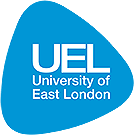0
The eighth International Conference of the Arab Society for Computer Aided Architectural Design ASCAAD 2016 will be organised at SOAS University of London - London, United Kingdom. ASCAAD is a society of those who teach and conduct research in computer-aided architectural design (CAAD) in schools of architecture in the Arab region of West Asia, and North Africa. ASCAAD is also active in Central Asia, Sub-Sahara Africa, and the Mediterranean. ASCAAD is one of five sister organisations in CAAD worldwide that share the same mission: ACADIA (North America, founded 1981), eCAADe (Europe, founded 1983), CAADRIA (Asia, founded 1996) and SIGraDi (Ibero-America, founded 1997). There is also CAADFutures foundation but with a world wide scope.
Download the 'Call for Papers and Posters' in PDF format
The ever-increasing speed of technological advancements is dictating a new paradigm in which design, performance and behaviour are outcomes. Nowadays, the use of the word ‘architecture’ is subsiding in favour of the ‘Built Environment’, which is automatically recognised as a subset of the ‘Environment’. By replacing or redefining the term 'architecture' by the term 'built environment' the discourse becomes purposefully and intentionally more inclusive of the different aspects of our 'Being-in-the world'. In conjunction, our everyday ‘Being-in-the-World’ is critically influencing the environment. We note two recent outcomes that addressed this, namely, the Sustainable Development Goals (SDGs) set out by the United Nations, and the Climate Change Summit recently held in Paris. In recognition of the role of Computer Applications in Architecture (CAAD), we tie our conference theme to the ongoing exploration into ways to combat climate change, through optimised environmental performance of buildings, sustainable use of materials and resources, and the resulting underlying development through enhancing the living conditions, with minimal impact on the environment.
ASCAAD 8th conference theme builds on previous themes and extends them. We previously examined two particular metaphors. The first metaphor addressed aspects of virtual environments that resemble our physical world; In other words, it examined how a computer model can be 'read; or interpreted as a physical model - how attributes of the physical world are assigned or projected upon the digital - and the reverse. In this conference, we would like to extend the exploration into aspects of virtual environments and their resemblance to physical environments by looking at the aspect of ‘performance’: the way in which environments are sensed, measured, tracked and visualised. Moreover, we reflect on matters and materiality in both virtual and physical space philosophically, theoretically, practically and reflectively. The second metaphor looked into the modes and means of interaction between our bodies and virtual environments. Here we extend the investigation to look into the ways in which environmental performance influences human interaction in real environments.
ASCAAD society and committee welcome you to join us and participate in its 8th international conference ASCAAD 2016. With involvement of researchers and professionals in the architectural community, it will be possible for ASCAAD to facilitate communication and information exchange regarding the use of Computer-Aided Architectural Design and Information Technology and how the use / implementation would support and lead to innovative concepts, tools, systems and products on architectural, Urban/City/regional planning, and building science levels. The conference provides opportunities for participants from different fields to share their ideas and contributions.
topics of interest /
ASCAAD 2016 conference invites submissions of original research papers, posters and exhibitions on topics related to computer-aided design, including but not limited to:
important dates /
| Deadline for abstract submission | Monday | June | 2016 | |
| Notification of abstract acceptance | 16 | June | 2016 | |
| Deadline for full paper submission | 31 | July | 2016 | |
| Notification of full paper acceptance | 28 | August | 2016 | |
| Deadline for revised full paper submission | 18 | September | 2016 | |
| Conference dates | 7 - 8 November | 2016 | ||
Abstract submission must be in Arabic or English with no more than 500 words. Upon the acceptance of the abstract, full paper can also be submitted in Arabic or English. Three types of submissions are possible:
Submissions should be sent in Word Document Format or Rich Text Format RTF. Each paper will be subject to a blind review by two to three referees. If the paper is accepted, author(s) will be invited to present the paper and have it included in the published ASCAAD 2016 conference proceedings, and will appear on Cumincad.org database (provided that for each accepted paper, at least one author pays the conference registration fee).
Papers should be formatted according to the ASCAAD paper template. If you require the arabic version, then please download ASCAAD arabic paper template.

